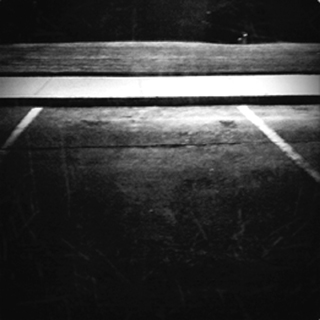
CHAPTER 6
Politics
THIS WORK WAS PRODUCED during a recent election cycle where the increasing divide between the have and have-nots was part of the discourse.
While looking at Riley's work in that context, it is easy to connect it to a landscape, an interior and exterior that continues to assert itself as it has for millennia, though we refer to this erosion of the middle class now as “the new normal.”
The images have a sense of unease, even edginess to them. To my eye, they easily relate to the concept of dark recesses, dark backroom deals, a lack of transparency, and a mockery of democracy where corporations are now people, money is free speech, and individual voter rights are rolled back as never before.

FIGURE 6.1 Untitled. © Karen Riley
What Are We Looking at?
The first image portrays an image of a staircase. In the ever-present context of politics, this can easily lead to associations with upward (or downward) mobility. The set of stairs, seen from within a dark basement space, reinforce the idea of the lights having been turned off in the basement, emphasizing the notion that the sun only shines for those at the top (Figure 6.1).
How Can the Images Be Interpreted?
This contains the next layer of subtext—the new upstairs–downstairs classifications. The US has the highest rate of incarceration of any country, and targets individuals of color, the young, and the poor. Those whose voting rights are being limited most overtly, as previously mentioned, also fall within this classification.
By contrast, the second image seems to mostly consist of a burst of light in the dark. Easily a metaphor for epiphany, the proverbial light bulb is turned on with some serious wattage, implying realization, comprehension, and even shock (to the system). The white light at the moment of death in the electric chair lingers in the context of these images too.

FIGURE 6.2 Untitled. © Karen Riley
Beneath that, we can find reference to streets that are lit, to manicured lawns, and to sidewalks that can actually be walked upon. In this world things still work as we expect them to and the sun undoubtedly rises there in the morning. The streetlight can thus also be interpreted as a moonscape, a place where the political sun keeps the lights on and makes the area safer at night.
The third image of a lit, empty parking space further references security—a possible work place, a leisure space, or a relatively safe place to walk to one's car, let alone a safe enough place where you can own one (Figure 6.3).

FIGURE 6.3 Untitled. © Karen Riley
What Does This Do?
This reminds us of the opposite and vice versa: An empty space or abandoned location also lives in this image as an inevitable counterpoint; job loss, shuttered businesses, repossessed vehicles and homes. This could be a potential place to sleep for someone without anywhere else to go. The image provokes a reinterpretation of even the most basic space designations for personal use in conjunction with available infrastructure as a result of public tax dollars, private or public permits, or “reserved” parking on the basis of status or reward, usually at a business.
And so we arrive at the fourth image in this square-minded series, which, with its four components, can form another perfect square, when not considered linearly, as we have done (Figure 6.4).

FIGURE 6.4 Untitled. © Karen Riley
The last image shows a simple line, a very basic graphic and compositional approach, to establish a lasting punctuation mark to this series of photographs.
This image provides no relief but doubles down. The image connects viewers to some of our most basic ways of understanding and describing our world spatially, morally, and politically.
Left or right, right or wrong, good and bad, light and dark, one side or the other, in other words: polarization, blind allegiance, and ideology. Nicely enough this too has a counterpoint: choice.
Conclusion
These images weren't created with black and white film: technology predicated on a negative that physically records the opposite of what we end up seeing. Instead, they were shot with a cell phone camera, the new Polaroid, and the countersurveillance/counternarrative tool of the twenty-first century. Of course the citizenry has to enter into a contract with a corporation to gain access to use these multi-function, multi-communication devices, usually at exorbitant cost. Still, in addition to recording endless breakfasts destined for consumption on Instagram, they have had a significant impact on the political landscape. The power of photography remains, and not only that, its power to change the political landscape now lies in the hands of those who can afford a smartphone and monthly cellular bill. The rest of the English-speaking world refers to cell phones as mobile phones. Even German speakers have borrowed an English word. They call this nifty tool a handy. This easily portable device, serving as a phone, still and video camera, satnav tool, iPod, compass, book, and so much more, is handy indeed. Something that is handy or mobile engenders quite different associations than something that is cellular. It is at this cellular level, at the foundation of life's building blocks, that we found ourselves polarized during this most recent election cycle. Its wide chasm inspired the original photos in previously unimaginable ways.
Will it again be a cell phone that to a large extent determines the outcome of the next election?
Assignments You May Want to Challenge Yourself With
•Income inequality
•Political landscape (in public spaces)
•Urban landscape
•New Polaroid
•Citizen journalism
